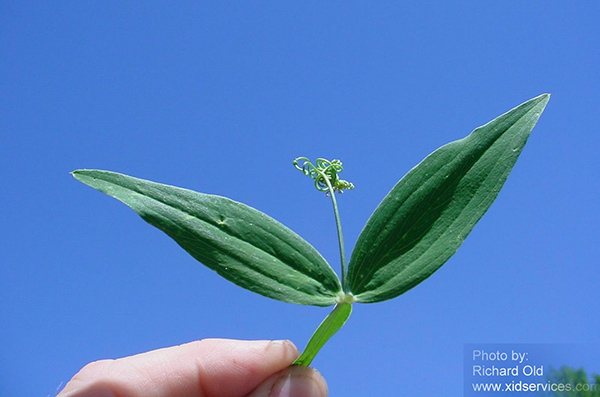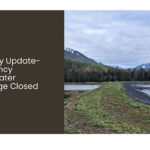Home »

Poisonous Peavine invader
How exactly Flat Peavine (Lathyrus sylvestris) arrived in the East Kootenay, no one is certain, but it has arrived with invading vengeance. Flat Peavine, now found throughout many parts of North America, is originally a native plant of Europe, North Africa and the Middle East.
 As is the case with many invasive plants, Flat Peavine may have hitchhiked into the East Kootenay on a vehicle. Or, due to its fragrant pink flowers and climbing nature, it may have arrived as an addition to someone’s flower garden. Perhaps it arrived as a landscape stabilizer for housing developments or as part of a land reclamation project since it was once touted as a long-lived erosion control plant that thrives in disturbed and acidic soils. Alternately, due to its high protein content it may have arrived as a part of ranchers experiment in forage crops.
As is the case with many invasive plants, Flat Peavine may have hitchhiked into the East Kootenay on a vehicle. Or, due to its fragrant pink flowers and climbing nature, it may have arrived as an addition to someone’s flower garden. Perhaps it arrived as a landscape stabilizer for housing developments or as part of a land reclamation project since it was once touted as a long-lived erosion control plant that thrives in disturbed and acidic soils. Alternately, due to its high protein content it may have arrived as a part of ranchers experiment in forage crops.
Regardless of its origin, the use of Flat Peavine as a forage became unlikely when it was discovered to contain high concentrations of diaminobutyric acid (DABA). DABA is poisonous to humans and non-ruminate animals. Ruminate animals such as cattle, goats, sheep, elk, and dear have three to four chambered stomachs. While resting, ruminates bring food back up, chew it, and re-swallow. This process and special ruminant microbes provide some digestive protection and, if Flat Peavine is introduced as forage gradually, ruminates can build up some tolerance. However, Flat Peavine remains poisonous to ruminant animals in amounts greater than approximately a third of their diet and over the long term, may have poisonous effects in lesser amounts.
While rarely seen in humans, except during times of famine, the symptoms of DABA poisoning in humans, livestock and wildlife can include permanent paralysis, bone deformities, cardiovascular collapse, pain, lameness, convulsions, and death. Forage shortage that results in increased consumption of Flat Peavine, greater than 35 per cent of diet, has been implicated in lower birth rates and a greater number of still births, however further research is required.
Flat Peavine’s use as a garden ornamental, landscape stabilizer or for land reclamation began to fall into question when it was discovered that it was highly invasive. Its invasiveness results from multiple methods of reproduction including seeds, rhizomes and ramets (self-clones), that allow it to quickly take over a surrounding area. Compounding the problem is Flat Peavine’s ability to climb (46 to 76 cm without support and up to 2.m+ with support), as well as its tendency to form a dense tendril entangled blanket that chokes out underlying native vegetation.
As a result, Flat Peavine lowers plant biodiversity and forms dense impassable thickets that block hiking trails and wildlife pathways while increasing fire risks. Most importantly, however, Flat Peavine lessens native food sources for wildlife and livestock, leaving in its place a poisonous alternative. The negative economic impact affects the raising of livestock, hunting opportunities and other recreational opportunities.
To date Flat Peavine has been found in the following areas of the East Kootenay: road shoulders predominately on Dicken Road in Fernie and near the Fernie Chamber of Commerce and a couple of sites along Highway #3 between Elko and Fernie. In Cranbrook, a few infestations have been sighted along JimSmith Road and around the Cranbrook Chamber of Commerce. Finally, a couple of isolated infestations have been found along the St. Mary’s Lake road, and near Overwaitea in Kimberley. At this time, it appears as though Flat Peavine is more widely distributed in the Central Kootenay.
Many of the known sites have been successfully treated, however new ones continue to emerge. Flat Peavine is most successfully controlled using herbicides including Clopyralid (Lontrel) or Aminopyralid (Milestone). Plants respond quickly to herbicide treatments and can be destroyed after one treatment. While hand pulling and digging could be attempted in a small area such as a home garden, the necessity of removing all the rhizomes make eradication very difficult and annual monitoring and removal is required.
Flat Peavine can be differentiated from other members of the pea family by a single pair of grass-like leaves attached to branches that extend from the main stem. A tendril used for climbing extends out from the center of the leaf pairing.
If you come across Flat Peavine on East Kootenay Crown land or other community use areas, please contact the East Kootenay Invasive Plant Council at 1-888-55EKIPC or [email protected] . Alternately, contact the Provincial Weed Reporting Hotline at 1-888-WEEDSBC www.reportaweed.ca .
The East Kootenay Invasive Plant Council and its Outreach and Education program gratefully acknowledges the financial support of Columbia Basin Trust, which supports efforts to deliver social, economic and environmental benefits to the residents of the Columbia Basin.
Above image: Flat Peavine can be differentiated from other members of the pea family by a single pair of grass-like leaves attached to branches that extend from the main stem. A tendril used for climbing extends out from the center of the leaf pairing. Richard Olds photo
Submitted







